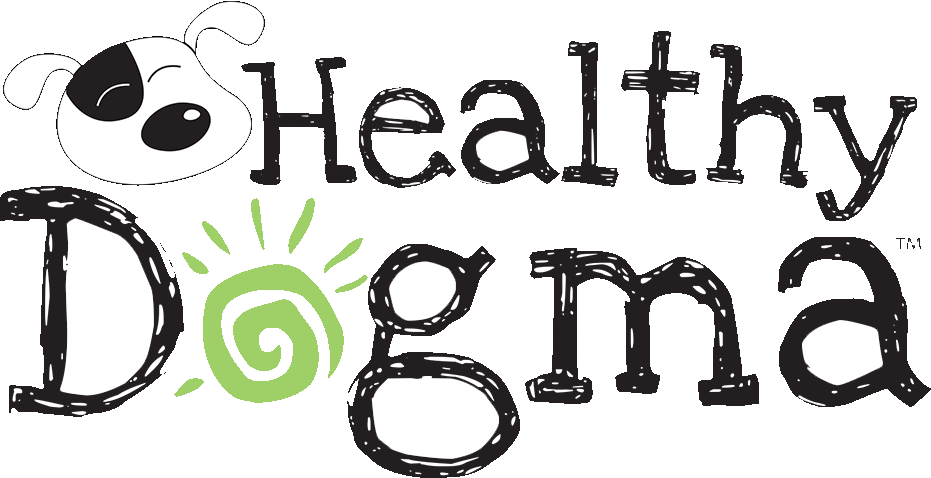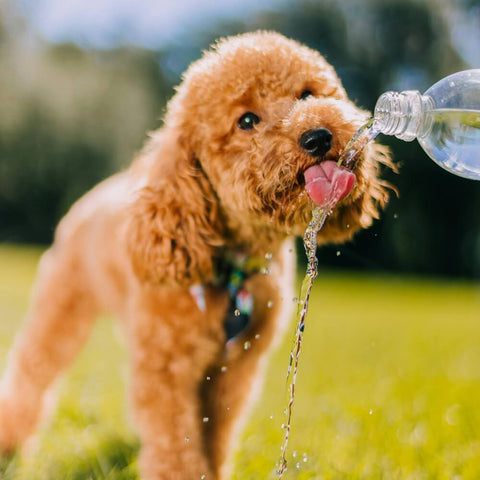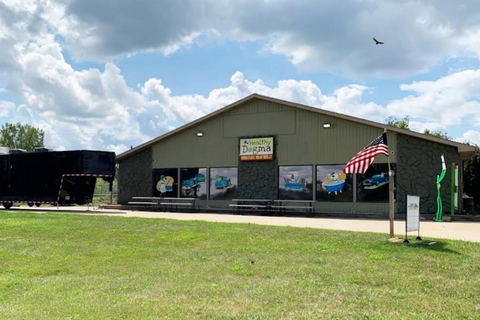Last week, we shared some handy hydration tips for your pets. If you haven't seen that post yet, it’s full of good advice and definitely worth a look. This time, we're focusing on another important topic: dehydration in dogs.
We'll explain what happens when dogs don't get the fluids they need and why this becomes such a serious issue.
What Is Dehydration in Dogs?
A dog’s dehydration isn't something to take lightly, especially when you realize that a dog's body is essentially 60 to 70% water.
Dehydration in dogs occurs when their body loses more water than it takes in, and there isn't enough water in the dog's bloodstream. When this happens, electrolytes in the body become unbalanced, which negatively impacts the ability of muscles and internal organs to function normally.
Keep reading to learn more about how to tell if your dog is dehydrated and warning signs, and cases.
How Can You Tell if Your Dog or Puppy is Dehydrated?
To help you spot potential dehydration in your dog, here are a few simple checks you can easily do at home.
- Painting More Than Usual
Dogs pant to cool down, which is normal. However, if your dog is panting much more than they usually do, it could be a sign of dehydration.
Keep in mind, extra panting can also mean they're in pain, anxious, or have a long-term health problem like Cushing's disease. And if you notice your dog is panting more, it's a good idea to let your vet know.
- Checking Skin Snap-Back
A good way to check for dehydration in dogs is to test their skin's stretchiness. Gently lift a bit of the loose skin on the back of their neck or between their shoulder blades, and then let it go.
- Well-hydrated dog: The skin should snap right back into place almost immediately.
- Dehydrated dog: The skin will take longer to return to normal. It might even stay raised for a moment, looking like a little tent.
- Dry Nose
A dog’s nose is generally moist, and if you notice their nose is dry, this can be a clear sign they're dehydrated. Sometimes, a dry nose can also point to other health issues, like a skin infection.
- Lower Energy (Seems Tired)
When it comes to dehydration in dogs, you might notice they seem weak and prefer to just lie around. They won't be as keen on running, playing, or jumping. This behavior change is often because their body is trying to conserve energy.
- Sticky or Pale Gums
If your dog is comfortable with it, raise their lip carefully to look at their gums. When a dog is hydrated enough, their gums should appear pink, shiny, and feel moist to the touch.
However, if your dog is dehydrated, their gums might tell a different story! You might find that if you touch their gums and your finger feels sticky, this tackiness is a common sign of dehydration. The gums might also look less vibrant and a bit duller in color.
- Thick and Stringy Saliva
A healthy dog's saliva is usually quite thin and watery. Dehydration can cause it to become noticeably thick and stringy, even looking a little like rope. You might also see it clinging to the inside of their mouth.
- Eyes Look Sunken
This is often a sign that dehydration is quite serious. It happens when the fluid in the fatty areas behind the eyes decreases, causing the eyes to look like they’ve sunk further into their head.
- A Faster Heartbeat
One final sign of dehydration we'll cover is a faster heartbeat. Normally, a dog's heart beats between 70 and 120 times each minute, while it can be a little higher for small breed dogs and still be okay.
When a dog is dehydrated, their heart might start beating faster than usual and stay that way for more than 30 seconds. If you find their heart rate stays above 160 beats each minute, this rapid pulse is a serious indicator, and it's time to get immediate veterinary care for possible dehydration in your dog.
The situation becomes extremely critical, often due to severe dehydration in dogs, if their heart rate stays as high as 250 beats each minute.
What Can Cause Dehydration in Dogs?
There are generally three main paths that cause dehydration in dogs, either they're not taking in enough fluids, they're losing too much, or heatstroke.
#1 Not Taking in Enough Water
A dog's body needs a constant supply of water to stay properly hydrated. If they don't drink enough to meet their body's daily requirements, dehydration can start to set in.
This often happens if a dog isn't eating or drinking well because they're sick or feeling unwell. It can also happen if they simply don't have access to water, perhaps accidentally (like if you're away and they knock over their water bowl) or if water is unfortunately withheld.
#2 Losing Too Much Fluid
Sometimes, even if a dog seems to be drinking, they can still become dehydrated because their body is losing fluids faster than they can replace them. The most common ways this happens are through diarrhea and vomiting, as both conditions cause the body to lose a lot of water and essential electrolytes.
Kidney disease is another significant cause, because when the kidneys aren't working correctly, they can't conserve water properly, causing too much fluid to be lost in urine.
Other situations that can cause a dog to lose excess fluids include having a fever, continuous panting, heavy, large skin wounds or burns that seep fluid, or even severe and ongoing drooling.
#3 Heatstroke
Another serious situation that can cause a dog to become dehydrated is heatstroke. This happens when a dog's body gets dangerously overheated, reaching a temperature above 41°C. Common ways this can occur include being left in a closed car, experiencing continuous seizures, or overdoing it with exercise in hot weather.
Never, ever leave your dog or any pet alone in a parked car. Even if the outside temperature is only around 15°C, the inside of a car can heat up very quickly. A dog can suffer from heatstroke in these conditions in as little as 15 to 20 minutes, even if you've left the windows slightly open.
While all dogs are at risk, some are more likely to experience heatstroke. This includes dogs that are overweight and breeds with short muzzles or brachycephalic breeds. The safest choice is always to leave your dog at home if you can't have the air conditioning running in your car and make sure they have access to water, even if you think you'll only be gone for a very short time.
The Role of Food in Your Dog's Water Intake
You might be wondering if your dog's food can play a role in their hydration, and it absolutely can. This is where a meal like our PetMix dog food comes in, as it's designed to help provide that needed water right from their bowl, often before they even realize they're thirsty.
We've actually updated our PetMix recipes recently and were able to reduce the amount of water we recommend for preparing it. Still, we sometimes hear from dog owners that it seems like a lot of water.

We completely understand that perspective! However, after careful consideration and consultation with our certified nutritionist on staff, we sincerely believe the current water levels are just right for our unique mix. This ensures the food rehydrates properly and provides a moisture-rich meal.
For those who are used to feeding dry kibble, which contains very little moisture, seeing the amount of water used with PetMix can be a bit of a surprise. It's a different way of thinking about mealtime hydration, but it's one we believe offers a great benefit by helping to make sure your dog is taking in essential fluids with every bite.
Explore Our 9 Natural, Healthy PetMix Recipes!


